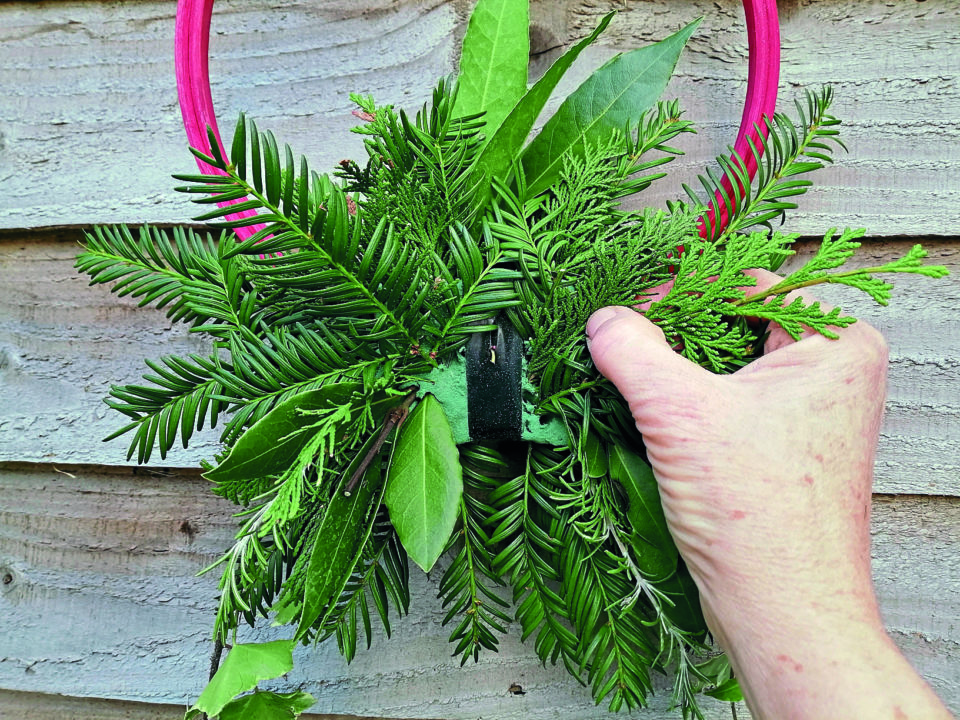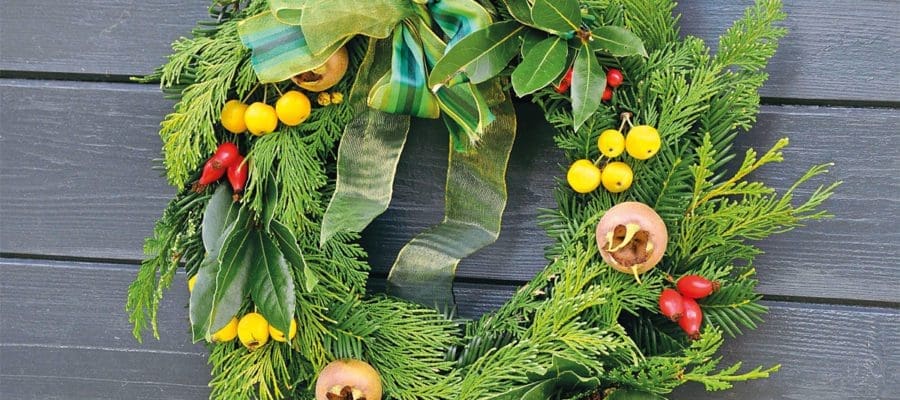It has long been a tradition to hang wreaths on doors at Christmas and you can also add a few edible highlights which you may have grown on your plot.
It can be great fun making your own Christmas wreaths and if you can gather a few friends or family together to join in and have a drink or two, it is even more enjoyable. Being gardeners, we usually have a few materials we can forage from our plots including fruit and veg to add some edible festive touches.
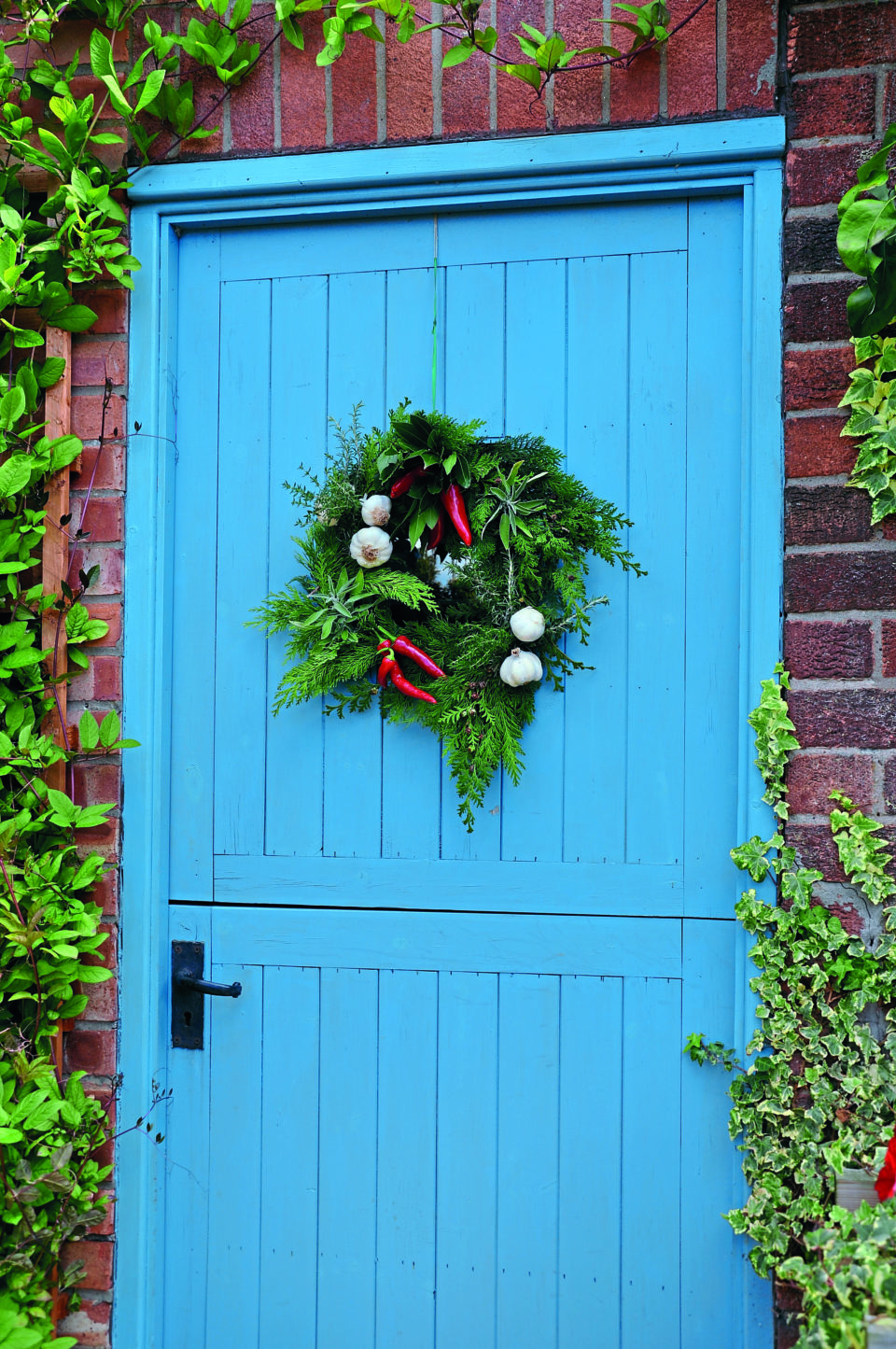
What you need
There are various wreath-making rings you can buy, including plastic ones which contain the green florist foam. Although not as environmentally friendly as some rings, they will last for years, and you can now also buy Bio floral foam which is more planet friendly and biodegrades over time.
As a greener alternative you could use soft twiggy material from the garden such as birch branches and tie them into a ring using some wire. Clematis stems are also ideal for making a wreath ring.
We also used some wooden embroidery rings. You can leave them as they are or give them a festive look by painting them with red, gold or silver paint.
Plant material: The traditional holly, ivy and conifer shoots can make a good base to the rings or you can use evergreen herbs such as thyme, rosemary and bay.
Other useful items: thin wire, ribbons and bows and some florist tape or duck tape.
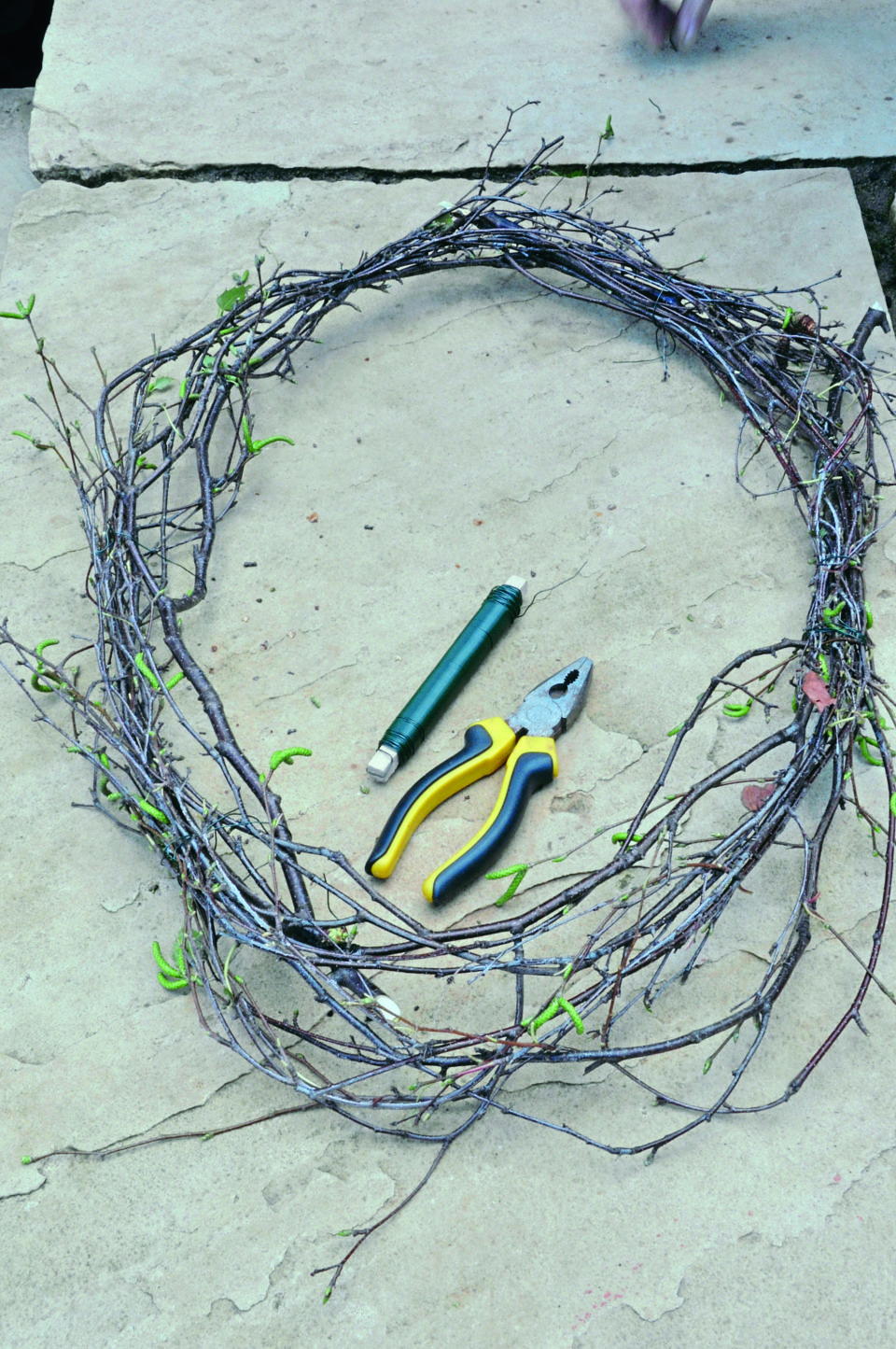

The Medlar and berry wreath
To start, soak the floral foam ring in water until fully charged with water. Then tie a good length of wire or ribbon to the ring securely. If hanging on a door it is worth doing this before adding foliage. Hold up to the door and calculate the length of ribbon or string you will need. Wreaths are quite weighty once made up so make sure it will be held firmly.
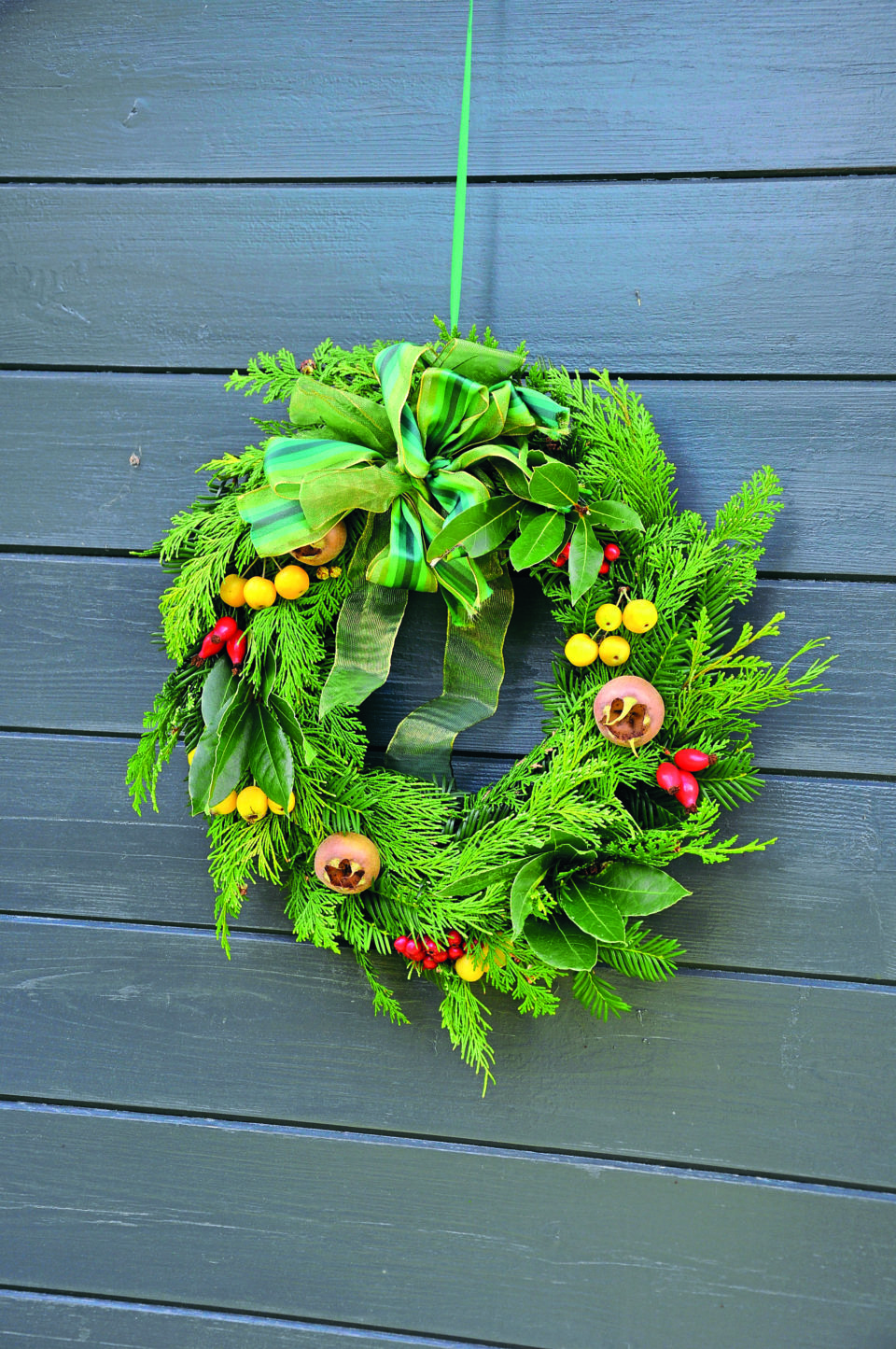
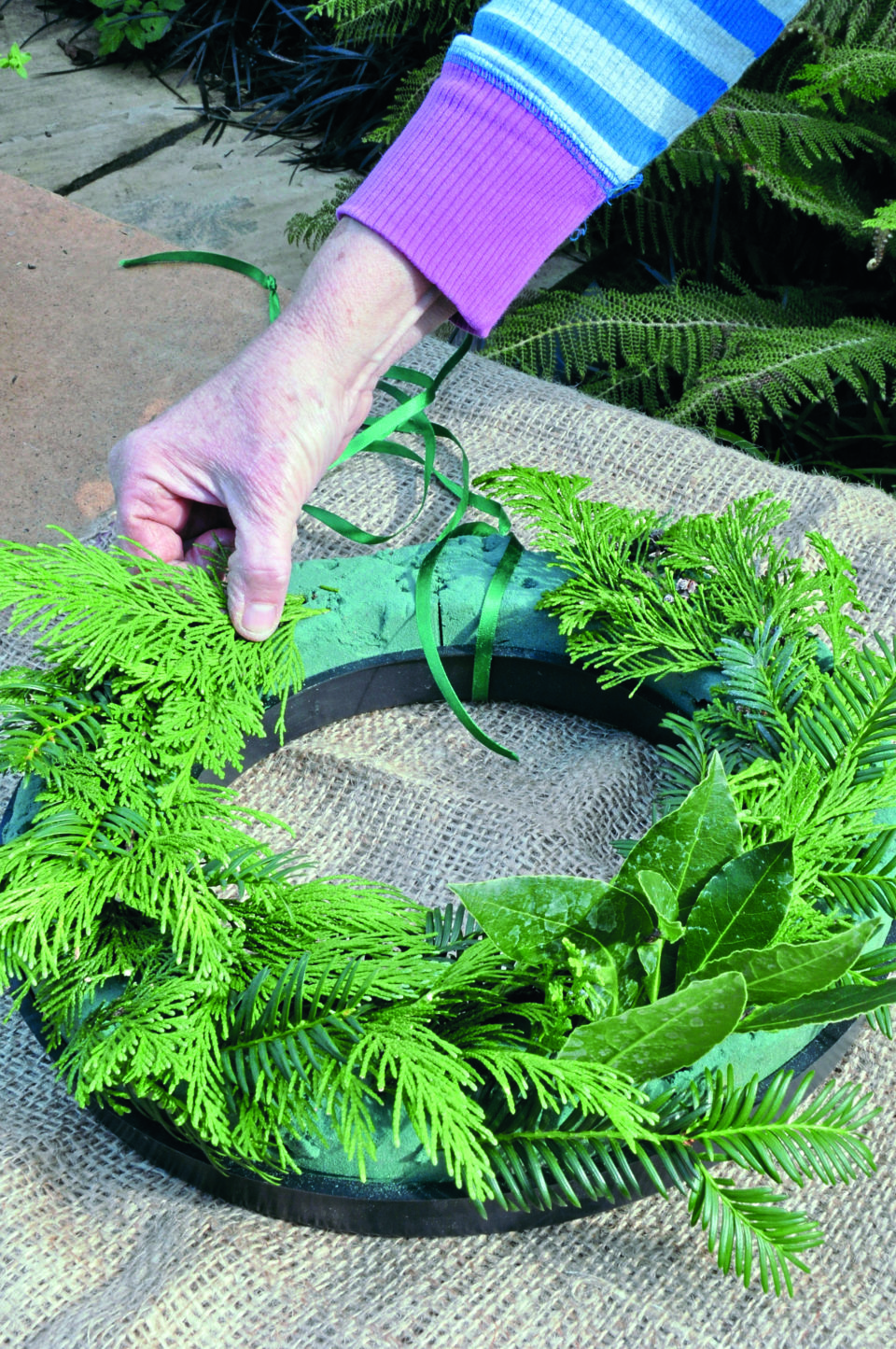
- Insert small pieces of conifer at a sharp angle so they remain quite flat to the ring. Work backwards around the ring to create the best effect. Add small bits to the outside edges and inside edges to hide the foam.
- After you have put a basic covering of the same type of foliage around the ring you could add some other foliage in, such as sprigs of bay leaves, yew, rosemary, thyme or even ivy.
- Now add some fruits to the wreath. Here a medlar has been pierced through the base with a needle first and then wire inserted and twisted round and then pushed into the foam.
- To add a bit of colour use sprigs of hawthorn berries, rosehips and crab apples. Simply twist some thin wire around the stems to be able to insert them into the foam.
- A colourful bow can be added at the end at the top of the wreath. You can either create the bow separately and then twist some wire through the back and insert into the foam or tie a bow on to the base of the hanging wire or ribbon.
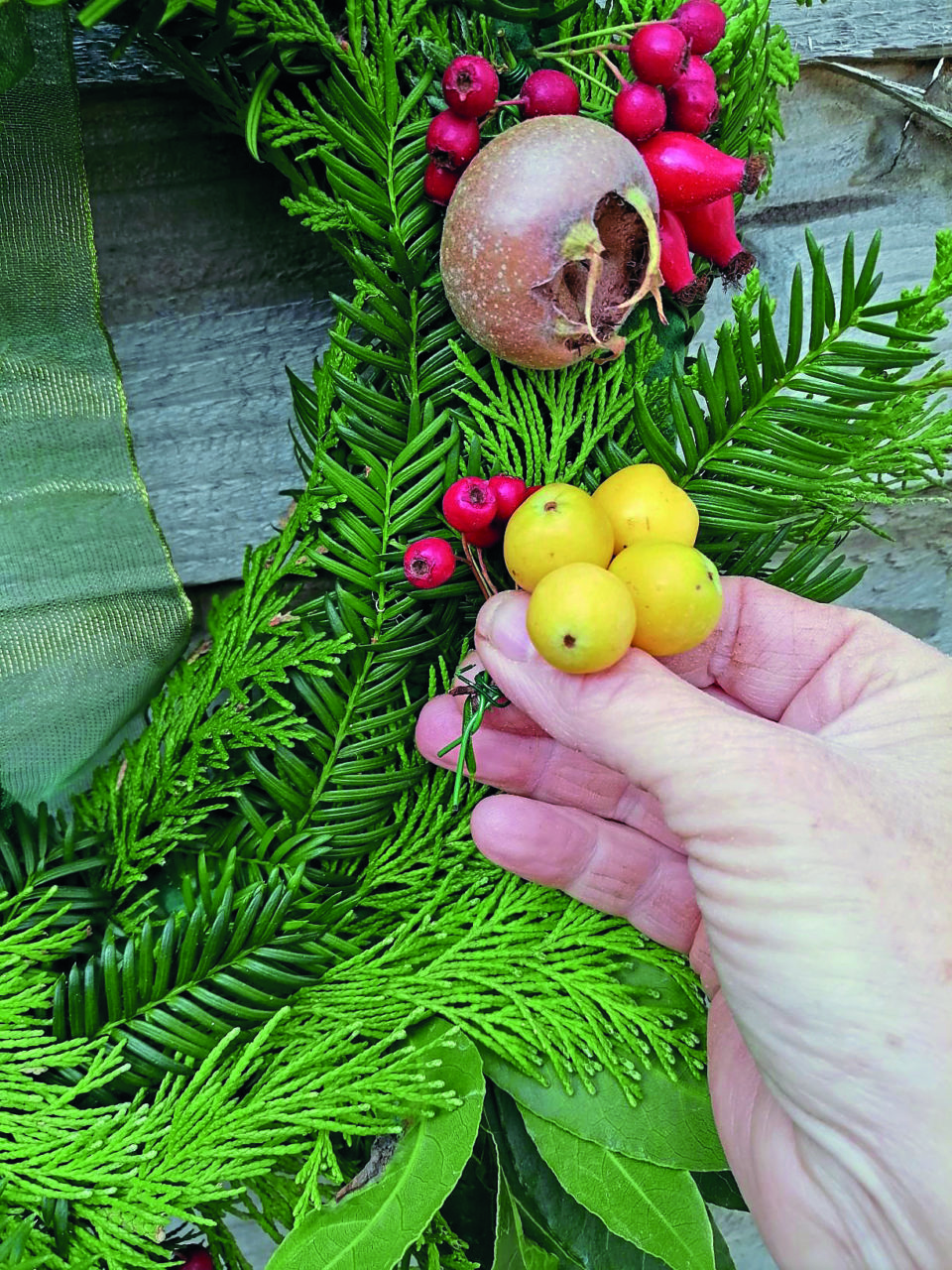
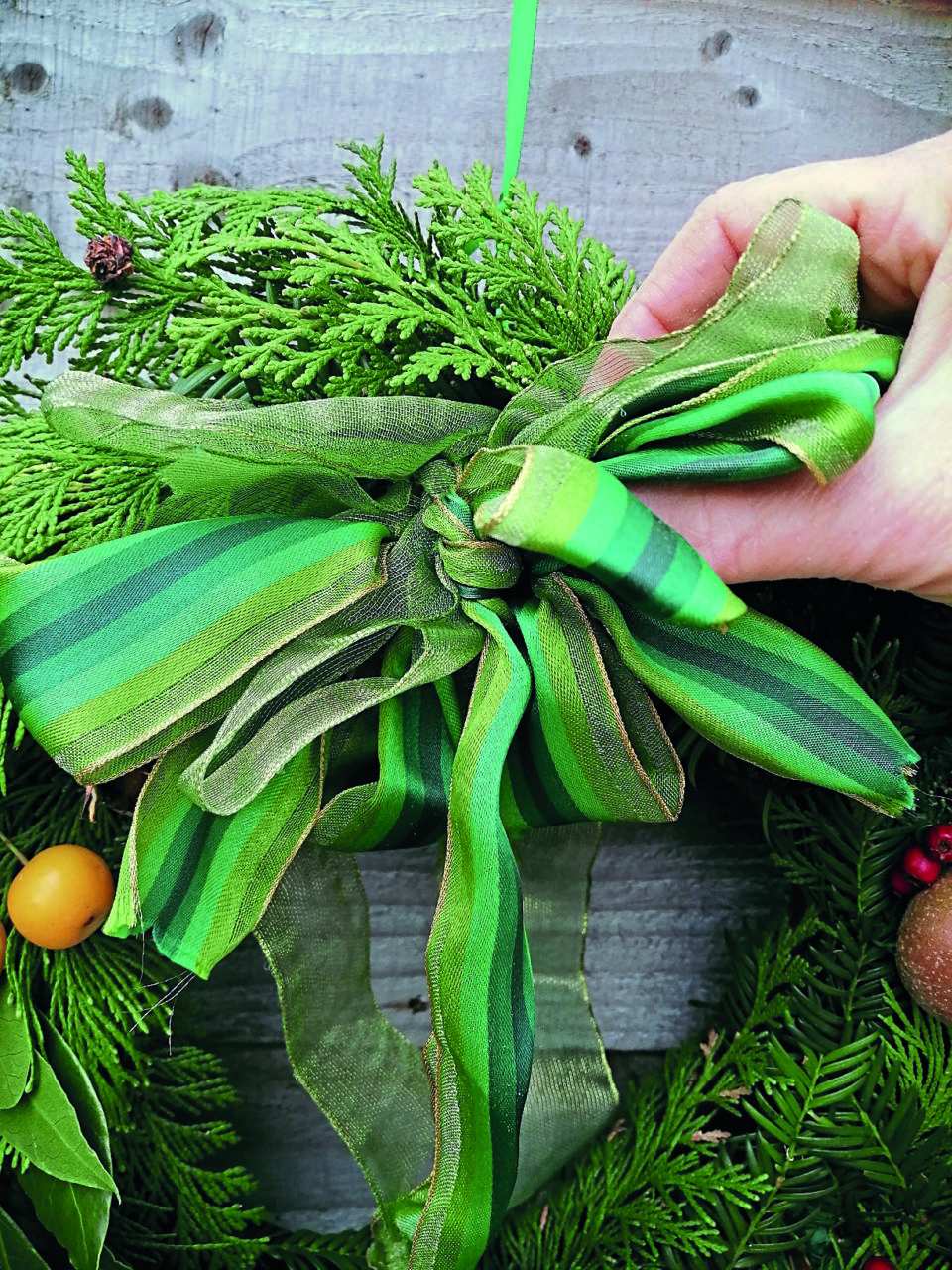
Chilli and garlic wreath
Metal rings can be bought to make wreaths. You can either tape foam between two rings or simply attach foliage with wire to one ring. The latter will not stay as fresh for quite as long. We wired short stems to one ring and again kept the foliage all facing the same way, layering over each other slightly as you move round the ring. We added a few sprigs of rosemary and sage and then wired on some garlic and chilli peppers. It is very simple to make but very effective.

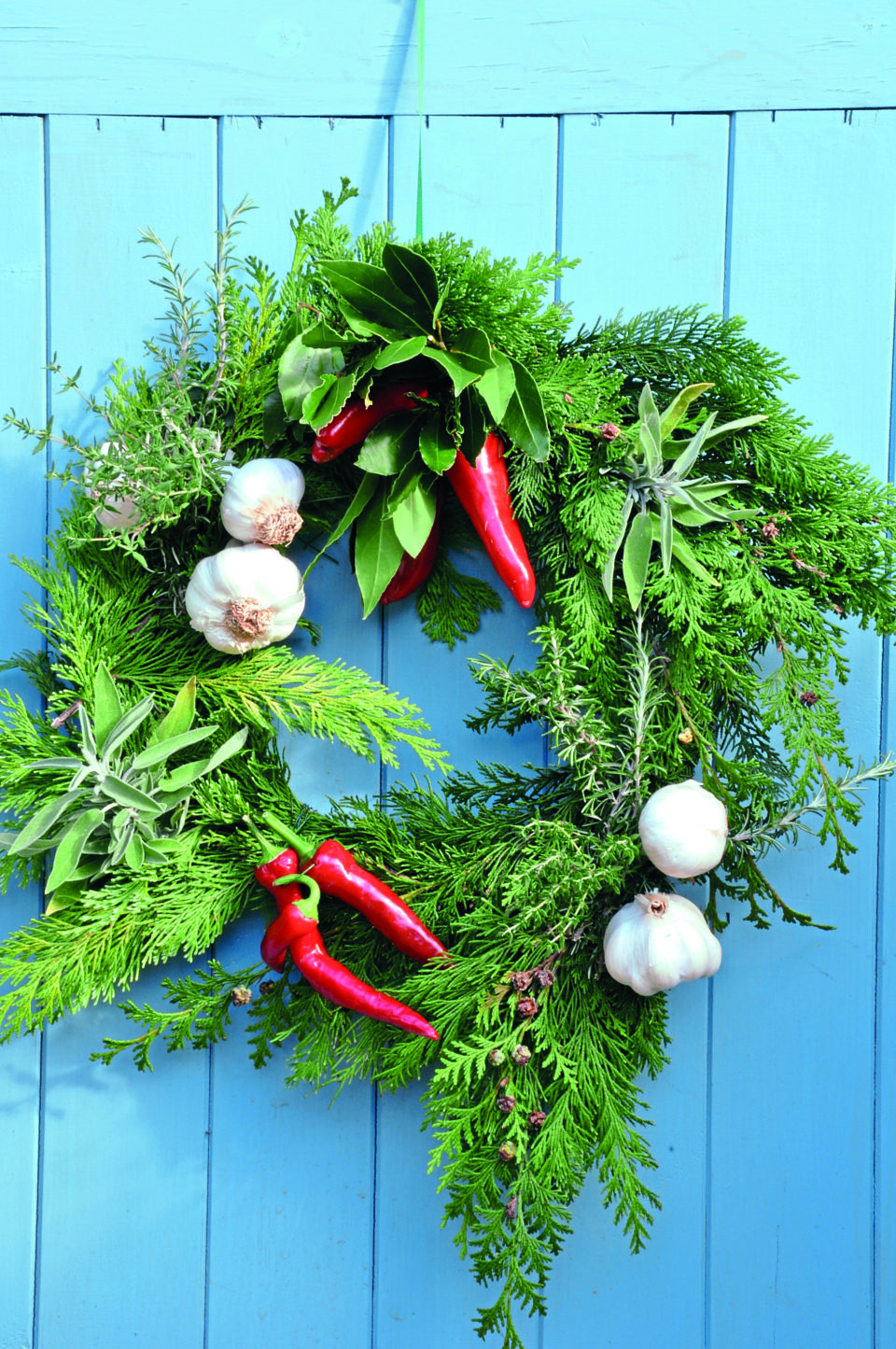
Hoop hoop hooray it’s Christmas
For this arrangement we used a 20cm (8in) diameter embroidery ring. They are easily available from haberdashery stores or online. We painted it red to give it a more festive look. These little arrangements are perfect for hanging in a window or on a door or even to make a small table arrangement.


- Some small pieces of damp florist foam are taped to the base of the ring. If you tape two pieces either side this will allow the ring to stand up on its own which is useful if it is being used as a table decoration. You could wrap a plastic bag round the foam to hold the moisture in.
- Start to add some foliage. In our case we used some yew and rosemary. You could put some longer pieces up the sides of the ring and maybe a couple opposite them to stick out below the ring, then infill with shorter pieces. A sprig of bay leaves was put in the top and single bay leaves added to infill.
- To add some contrasting highlights we used some variegated ivy leaves attached to short stems that were pushed into the front of the arrangement and then we added some sprigs of hawthorn berries.
- Finally, a piece of thin ribbon was attached to the brass clasp at the top of the ring to hang the hoop up and then another bow was added at the top for a decorative feature.
